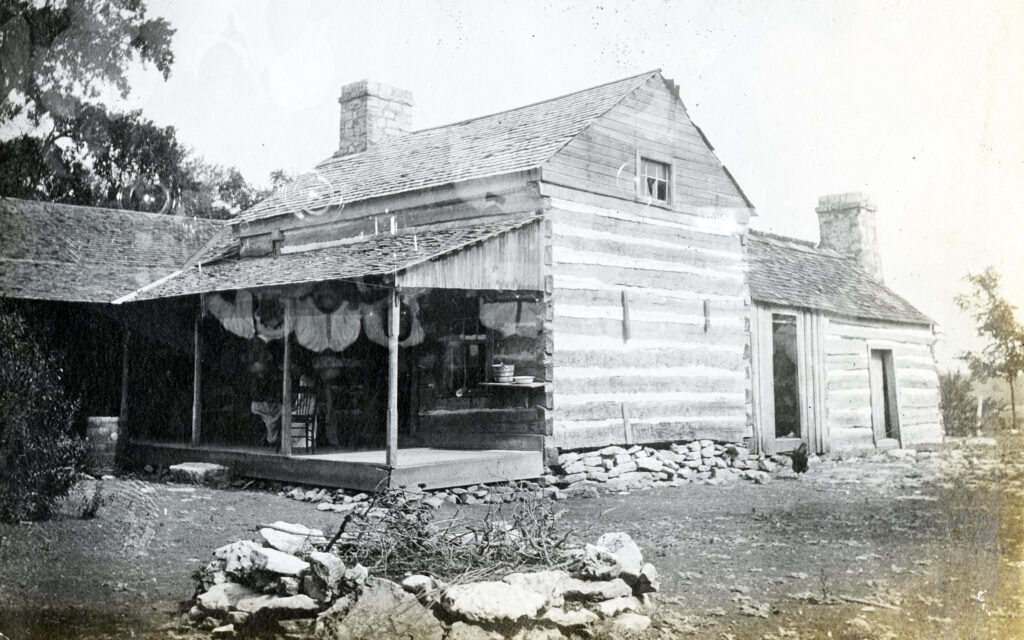photos courtesy of the Williamson Museum
The historic Williamson County Courthouse is home to county leadership and open to visitors as part of our museum tour. But for nearly a century, it was a functioning courthouse; the center of our government and trial courts, and a social gathering place.
The courthouse we know is actually the County’s fifth, a neoclassical structure topped by a statue of Themis, the Greek goddess of justice. The original courthouse (top) was purchased in 1849, a 16-square-foot log home on Main Street east of the current courthouse. The current courthouse, on the downtown Square, was built in 1910.
“The Williamson County Courthouse has served the public in many capacities since 1911 and is still a working part of our lives today,” says Danelle Houck, the museum’s educational program coordinator. “Preservation and restoration connect the past to the present and future. The renovations have preserved Texas architecture and help tell the stories of Williamson County.”

One of those stories is re-lived through annual Rouse High School field trips, in which students read To Kill a Mockingbird and come to the courthouse to learn the story of Dan Moody, the Williamson County district attorney who successfully prosecuted the KKK in the 1920s. Students read and act out the final courtroom scenes of the book in a courtroom from the same time period of the book. “The courthouse makes the stories of Williamson County come alive,” Danelle says.
RESTORATION & FAMOUS CASES
Throughout years of wear and tear, the courthouse has undergone three significant renovations. In 2000, the county was awarded a $250,000 grant from the Texas Historical Commission, the state agency for historic preservation, to restore the building, followed by another grant for $3.75 million. In total, restoration cost $9 million, and with the help of the Texas Historical Commission and the dedication of preservation-minded citizens and officials, the historic treasure has been returned to its original 1910 splendor.
The courthouse was the setting of several landmark cases. Williamson County District Attorney Dan Moody successfully prosecuted the KKK in the 1920s in the courthouse’s 26th District Courtroom, and he went on to become the youngest governor in Texas history at 33 years old. Michael Morton was also tried there in 1987, and sentenced to life in prison for the murder of his wife, Christine Morton. Mr. Morton was exonerated by DNA evidence in 2011.
AND ONGOING
Today, the courthouse serves as an administrative building for county offices including public affairs, the treasurer, auditors, county judge, and the budget department. Every Tuesday, the Commissioners Court gathers to discuss county business on the second floor of the building.
The next time you take a stroll around the Square for a bite to eat or a shopping excursion, stop to admire the courthouse—the magnificent historic landmark that is the pride of Georgetown.
